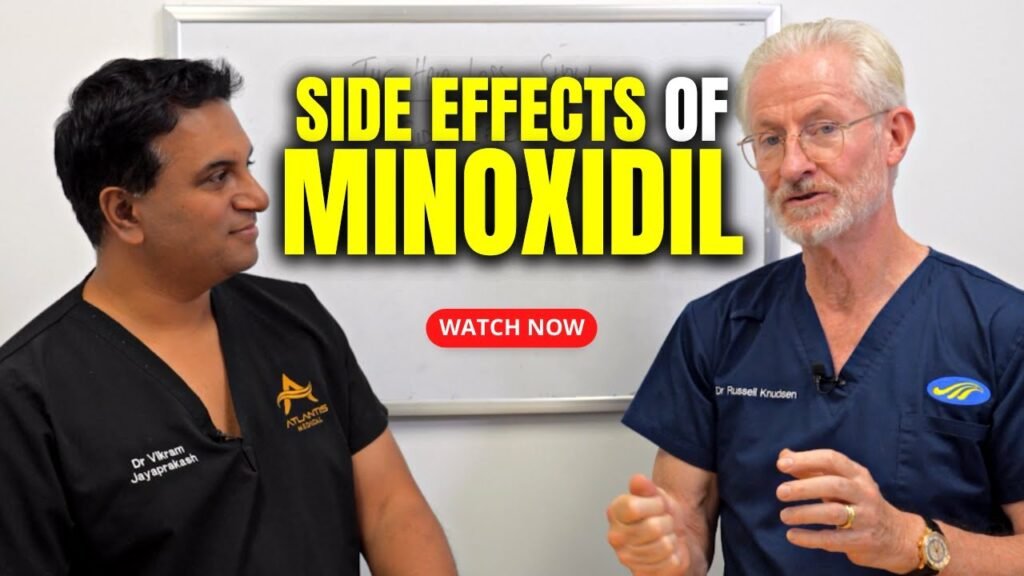Understanding Scalp Irritation: What to Expect with Minoxidil
When beginning treatment with Minoxidil, a common concern among users is scalp irritation. This topical medication, often used for hair regrowth, can sometimes lead to side effects that may include itching, redness, and flaking of the scalp. Understanding these potential reactions can help users manage their expectations and find solutions to mitigate discomfort.
Common Symptoms of Scalp Irritation
Upon applying Minoxidil, some individuals may experience itchiness or a tingling sensation on the scalp. This is typically a result of the alcohol or propylene glycol used in the formulation, which can dry out the skin. Additionally, users might notice redness or inflammation, indicating that the scalp is sensitive to the treatment. In some cases, flaking or dandruff-like symptoms may occur as the skin reacts to the new topical agent. These symptoms are generally mild and tend to decrease as the scalp adjusts to the product.
Managing and Reducing Scalp Irritation
To minimize scalp irritation, its important to follow the application instructions carefully and avoid overuse. Applying a moisturizing shampoo or conditioner can help alleviate dryness and flaking. For those experiencing persistent irritation, switching to a foam formulation of Minoxidil, which typically contains less alcohol, might be beneficial. Its also advisable to perform a patch test before full application to ensure compatibility with your skin. If severe irritation persists, consulting with a dermatologist is recommended to explore alternative treatments or formulations.
Common Symptoms of Scalp Irritation from Minoxidil
Minoxidil is a popular topical treatment for hair loss, but it can sometimes lead to scalp irritation. Understanding the common symptoms of this irritation is crucial for users to manage their treatment effectively. One of the primary signs of scalp irritation from minoxidil is redness. This redness occurs as the scalp reacts to the active ingredients in the solution, leading to increased blood flow to the affected area. Users may notice this redness shortly after applying the product, and it can persist if the treatment is continued without addressing the irritation.
Another frequent symptom is itchiness. This uncomfortable sensation can range from mild to severe and is often accompanied by a tingling feeling on the scalp. Itchiness can occur due to the alcohol content in some minoxidil formulations, which can dry out the skin, leading to irritation. For those experiencing significant itchiness, it might be beneficial to consult a healthcare professional or consider switching to a formulation with a lower alcohol content or one designed for sensitive skin.
In addition to redness and itchiness, some individuals may experience flaking or dandruff as a symptom of scalp irritation from minoxidil. The drying effect of the solution can cause the scalp to shed more skin cells than usual, resulting in visible flakes. This flaking can be particularly bothersome for users with darker hair, where the dandruff is more noticeable. Using a gentle, moisturizing shampoo may help alleviate this symptom and provide relief to an irritated scalp.
How to Identify the Top Signs of Scalp Irritation from Minoxidil
Minoxidil is a popular treatment for hair loss, but its important to be aware of potential scalp irritation, a common side effect. Recognizing the signs early can help prevent more severe reactions. Redness and inflammation are among the first indicators of scalp irritation. If you notice your scalp turning red or feeling inflamed after applying minoxidil, this could be a sign that your skin is reacting adversely to the treatment. These symptoms can appear shortly after application and may worsen with continued use.
Another key sign to watch for is itching and flaking. Many users report experiencing an itchy scalp, which can lead to excessive scratching. This, in turn, might cause flaking or dandruff-like symptoms. Its crucial to differentiate this from regular dandruff; if the flaking started after beginning minoxidil, it is likely related to the medication. Burning or stinging sensations are also common and may occur immediately after application, indicating irritation.
Peeling or blistering is a more severe sign of scalp irritation. If you observe blisters or peeling skin, its essential to stop using minoxidil and consult a healthcare professional. These symptoms suggest a stronger reaction that requires medical attention. Always ensure to follow the recommended dosage and application instructions to minimize the risk of irritation, and consider conducting a patch test before full application to check for any adverse reactions.
Preventing Scalp Irritation: Tips for Minoxidil Users
Minoxidil is a popular topical treatment for hair loss, but it can sometimes cause scalp irritation. To help minimize this side effect, its important to adopt a few precautionary measures. Start by performing a patch test before applying minoxidil all over your scalp. This will help you determine if you have any sensitivity to the product. Apply a small amount to a discreet area and wait 24 hours to check for any adverse reactions. If theres no irritation, you can proceed with more confidence.
Another essential tip is to ensure your scalp is clean and dry before applying minoxidil. Residual oils or moisture can interfere with the absorption of the treatment, potentially leading to irritation. Washing your hair with a gentle, sulfate-free shampoo can help maintain scalp health. If your scalp becomes dry or flaky, consider using a lightweight, non-comedogenic moisturizer to restore balance without clogging pores.
For those experiencing persistent irritation, adjusting the application frequency or dosage might be necessary. Consult with a healthcare professional to determine the appropriate concentration and usage for your specific needs. In some cases, using minoxidil once a day instead of twice can reduce irritation without significantly affecting results. Additionally, avoid using other hair or scalp products immediately after applying minoxidil, as they may interact negatively and increase the risk of irritation.
When to Seek Professional Advice for Scalp Irritation from Minoxidil
Experiencing scalp irritation from Minoxidil is a common side effect, but its crucial to understand when this irritation warrants professional advice. If you notice persistent redness, itching, or flaking that does not subside after a few weeks of use, it may be time to consult a healthcare provider. These symptoms could indicate a more severe reaction or an underlying condition that requires medical attention.
Signs of Severe Reactions
While mild irritation is normal, severe reactions are not. Blistering, intense burning, or swelling of the scalp are signs that you should immediately stop using Minoxidil and seek professional advice. Such symptoms might suggest an allergic reaction or a sensitivity to the products ingredients, and a healthcare professional can provide guidance on alternative treatments or medications to alleviate these issues.
Consulting a Dermatologist
If over-the-counter remedies and self-care measures do not alleviate the irritation, consulting a dermatologist is advisable. Dermatologists can perform tests to determine if the irritation is indeed due to Minoxidil or if another scalp condition is at play. They can also recommend tailored treatments or prescribe topical steroids to reduce inflammation, ensuring that your scalp health is not compromised while using hair growth treatments.


